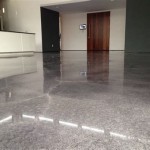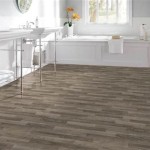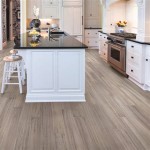Is Vinyl Flooring Warmer Than Tile In Bathroom? Essential Aspects to Consider
When renovating or constructing a bathroom, selecting the appropriate flooring is crucial for both aesthetics and comfort. Vinyl flooring and ceramic tile are popular choices, but each material offers distinct advantages and disadvantages. One key consideration is thermal comfort, especially in colder climates. In this article, we will delve into the question of whether vinyl flooring is indeed warmer than tile in the bathroom setting, exploring factors such as material properties, insulation, and underlayment options.
Material Properties
Vinyl flooring is a resilient flooring material made from polyvinyl chloride (PVC), while ceramic tile is a hard-surfaced material made from clay and other minerals. Ceramic tile naturally has a higher thermal conductivity compared to vinyl, meaning it conducts heat more easily. This means that ceramic tile will feel colder to the touch than vinyl flooring, especially when bare feet are involved. On the other hand, vinyl flooring has a lower thermal conductivity, resulting in a warmer and more comfortable feel underfoot.
Insulation Layer
Many vinyl flooring options come with an attached insulation layer made of cork, foam, or felt. This layer provides additional thermal insulation, further enhancing the warmth of the flooring. Most ceramic tiles do not have an insulation layer, although some manufacturers offer tiles with a foam backing for improved comfort. However, these tiles may not provide the same level of warmth as vinyl flooring with an integrated insulation layer.
Underlayment Options
Underlayment is a thin layer of material installed beneath the flooring to provide additional cushioning, sound absorption, and thermal insulation. When installing vinyl flooring, it is recommended to use an underlayment specifically designed for vinyl. These underlayments are typically made of foam or cork and can significantly increase the warmth of the floor. Ceramic tile, on the other hand, does not require an underlayment, but it can be used to improve comfort and warmth, especially if the subfloor is cold.
Other Factors to Consider
In addition to the thermal properties of the flooring material, other factors can affect the overall warmth of a bathroom floor. These include:
- Subfloor temperature: The temperature of the subfloor can影響 the warmth of the flooring. A heated subfloor will make both vinyl and ceramic tile floors feel warmer.
- Bathroom size: Larger bathrooms tend to be colder than smaller ones, so it is more important to consider thermal comfort in larger spaces.
- Personal preferences: Some individuals are more sensitive to cold temperatures than others, so personal preferences should be taken into account when choosing bathroom flooring.
Conclusion
Based on the factors discussed above, vinyl flooring is generally considered warmer than ceramic tile in bathroom applications. Vinyl's lower thermal conductivity and the availability of insulation layers and underlayment options contribute to its ability to retain heat. However, ceramic tile can also be made more comfortable by utilizing foam-backed tiles and underlayment. Ultimately, the best choice for bathroom flooring depends on individual preferences, budget, and the specific characteristics of the space.

The Pros Cons Of Bathroom Flooring Options Carpet Court

The Pros Cons Of Bathroom Flooring Options Carpet Court

Can You Renovate Bathrooms With Vinyl Flooring Imagine Floors

Vinyl Flooring For Your Bathroom D R

7 Benefits Of Bathroom Vinyl Flooring Victorian Plumbing

Bathroom Flooring How Do I Choose What S Best Multipanel

Best Bathroom Flooring Options

The Pros Cons Of Bathroom Flooring Options Carpet Court

Tile Alternative For Bathroom Floors Multipanel

Luxury Vinyl Flooring And Other Options For Your Bathroom Builddirect Blog
Related Posts








